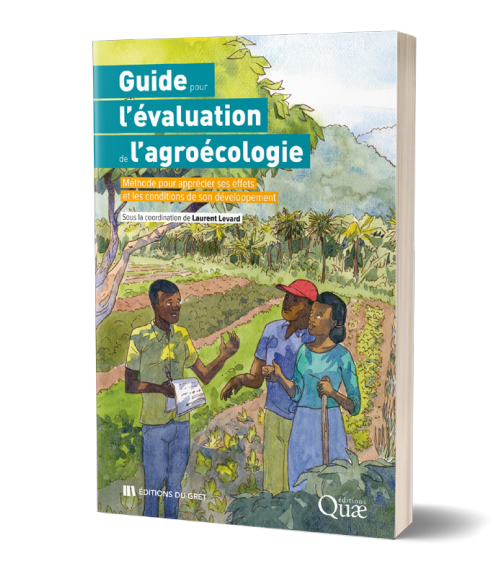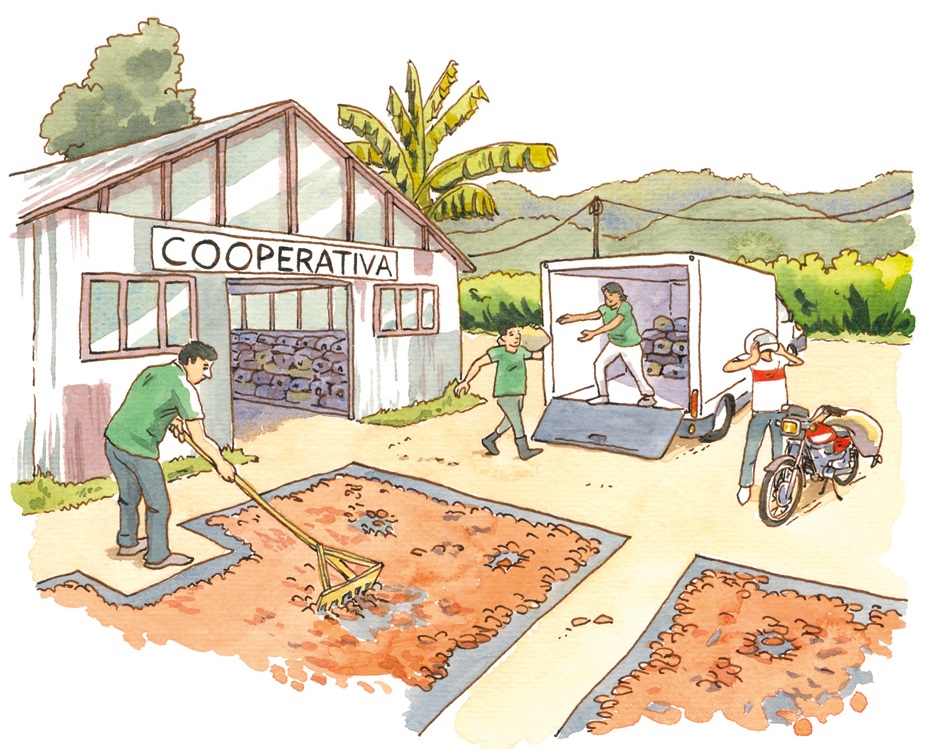Co-published by Quæ and GRET and released on 23 February, the Guide pour l’évaluation de l’agroécologie* is the result of collaboration between the teams at Agrisud International, AVSF, Cari and GRET[1], as well as those at AgroParisTech, Cirad, IRD and Institut Agro Montpellier. It features an approach and methodological tools to assess the effects of agroecological practices and systems on the agro-environmental and socio-economic performances of agriculture, and on the conditions necessary for the development of agroecology. It is devised to help development stakeholders better design their projects, programmes and public policies, to facilitate the creation of references and support farmers so that they can better evaluate the results of their practices and thereby make informed decisions.

*Guide for the evaluation of agroecology
- Download the guide here (FR)
Interview with Laurent Levard, agro-economist at GRET and coordinator of the guide.
Which major challenges are addressed in this guide?
One of the objectives is to produce data generated by a scientific approach on the socio-economic and agro-environmental effects of agroecological practices and systems. We know that in all countries across the world and at international level, the debate on agricultural models is intense and extremely powerful economic interests are pushing towards models produced by the green revolution. It is crucial therefore that farmers – and societies in general – be able to compare the effects of agroecology with those of agricultural models.
Collecting the results obtained in particular territories based on a scientific approach makes it possible to convince decisions-makers, international agencies, international cooperation organisations and public authorities of the benefits of supporting the development of agroecology.
We have just used the evaluation method proposed in the guide in a Sahelian area in Burkina Faso, where we observed that agroecological systems make it possible to improve soil health, obtain much higher agricultural yields and better income for farmers. They also ensure much better food security, especially during the hunger gap.
Who is this guide aimed at?

This guide is aimed at development stakeholders and public authorities. It is intended as a tool they can use to make their interventions more effective. This requires evaluating the effects of agroecology, and establishing which practices and systems make it possible to increase farmers’ incomes, improve food security or, for example, to generate beneficial effects on soil health and agricultural biodiversity.
With this guide, we want to give them the means to better understand what we call the “conditions necessary for the development of agroecology”: the factors that favour or limit its development. It is by identifying these factors that we can ascertain what needs to be put in place to remove obstacles to the development of agroecology. This is essential because although farmers’ organisations, NGOs and public authorities across the world are now supporting agroecology, the results are sometimes uneven. These stakeholders need to take a step back and look at what they are doing to promote agroecology and better understand the key factors to ensure its development.
This guide is also aimed at higher education institutions teaching agronomy and agricultural economics andtraining their students to better evaluate the performances of agricultural systems. This makes it possible to leverage evaluations and continue to produce references.
In addition, it is useful to evaluate the effects of agroecology for farmers themselves: for those already practising it, as well as those not yet practising it. The method includes phases to present and discuss results with farmers. This enables them to think about their practices and improve their production systems.
The FAO created its own approach to evaluate agroecology, how is this guide different?
The FAO’s work is important; it’s the first time that an international organisation tackled the essential issue of evaluating agroecology. The Agroecological transitions working group (GTAE) participated in this work, and we also drew on some of its methodological elements. But we have our own specificities: we opted for an indepth analysis of farms and production systems (average yields, agricultural income, food security), to ensure more reliable results. We are examining the effects of practices as well as factors that favour or hinder the development of agroecology. Lastly, in addition to ad hoc evaluation, we recommend a monitoring and evaluation approach over time, making it possible to monitor the effects of interventions at regular intervals.
This guide also covers the impact of agroecological transition on gender equality. How is this pertinent?
Agroecology can have different specific effects on women and men, and in some cases can reduce inequalities; in other cases, it can contribute to increasing them. Its growth can, for example, generate the creation of new activities conducted by women, enabling them to increase their income and their autonomy. For example, this is one of the objectives of GRET’s intervention in Cambodia, as part of the APICI project. But it can also lead to excess work for women who often already work more than men. So, the guide proposes conducting a differentiated evaluation whenever gender-specific effects are observed.
Can agroecology make farming more attractive to young people?
This is an essential question. In fact, there is a specific factsheet on it in the guide. Almost everywhere in the world, young people aspire to better living and working conditions than those of their parents. From this point of view, agriculture is not generally perceived as being very attractive. Agroecology can be a disincentive for young people if all it leads to is extra work. However, it can become appealing if it enables decent income, and if it gives new meaning to their work thanks to the production of good quality, healthy products.
Agroecology is also sometimes included in social dynamics that are particularly stimulating for young people, such as the creation of associations, cooperatives, and methods for processing of agricultural products, as is the case for example in numerous Latin American countries.

The Guide pour l’évaluation de l’agroécologie was produced thanks to financial contributions from Agence française de développement (AFD), GRET, the Economic Community of West African States (ECOWAS), the Hauts-de-Seine Regional Council, Éditions du GRET, the Inter-American Development Bank and Fondation Ensemble.
[1] Working together within the Agroecological transitions working group (GTAE).


